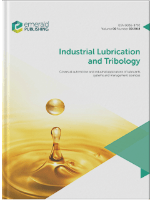
INDUSTRIAL LUBRICATION AND TRIBOLOGY
Scope & Guideline
Unlocking the secrets of tribology for lasting machine performance.
Introduction
Aims and Scopes
- Tribological Performance Evaluation:
Research dedicated to understanding and measuring the friction, wear, and lubrication characteristics of materials and systems under various operational conditions. - Development of Advanced Lubricants:
Studies focused on the formulation and enhancement of lubricants, including bio-lubricants, nanofluids, and novel additives to improve performance and sustainability. - Surface Engineering and Texturing:
Investigations into the impact of surface modifications, textures, and coatings on tribological performance, addressing how these factors influence lubrication and wear characteristics. - Numerical and Experimental Analysis:
Utilization of both computational and experimental methods to model and analyze lubrication systems, bearing performance, and tribological interactions under various conditions. - Sustainability in Tribology:
Research exploring sustainable lubrication practices, including the use of environmentally friendly materials and methods that reduce environmental impact.
Trending and Emerging
- Nanotechnology in Lubrication:
Research on the incorporation of nanoparticles and nanomaterials into lubricants is on the rise, focusing on their ability to significantly enhance tribological performance and reduce friction and wear. - Bio-based and Sustainable Lubricants:
There is a growing interest in the development and application of bio-based lubricants, reflecting a broader trend towards sustainability and the reduction of environmental impact in lubrication practices. - Advanced Surface Texturing Techniques:
Emerging studies are increasingly exploring complex surface textures and their effects on lubrication performance, indicating a trend towards optimizing surface interactions in tribological systems. - Machine Learning and Artificial Intelligence Applications:
The integration of machine learning and AI in predicting lubrication performance and optimizing tribological systems is gaining traction, showcasing the journal's embrace of digital transformation in engineering. - Hybrid Lubrication Systems:
Research on hybrid lubrication systems that combine different lubrication technologies is trending, emphasizing the need for versatile solutions in various industrial applications.
Declining or Waning
- Traditional Mineral Oil Research:
There has been a noticeable decline in studies focusing solely on conventional mineral oils as researchers shift towards bio-based and synthetic lubricants that offer improved performance and environmental benefits. - Static and Dynamic Sealing Technologies:
Research on traditional sealing methods and technologies has decreased as newer materials and innovative designs are being explored, reflecting a move towards more advanced sealing solutions. - Basic Friction Studies:
The focus on fundamental friction studies without considering complex interactions or advanced materials has diminished, as the field increasingly emphasizes practical applications and innovative solutions. - Conventional Coating Technologies:
Interest in traditional coatings for tribological applications has waned, as researchers explore more advanced materials and composite coatings that offer superior performance.
Similar Journals

Jurnal Tribologi
Empowering researchers with open access to pivotal tribology studies.Jurnal Tribologi, published by the MALAYSIAN TRIBOLOGY SOC-MYTRIBOS, stands as a pivotal platform for research in the interdisciplinary field of tribology—focusing on the friction, wear, and lubrication of materials. Established in Malaysia and embracing Open Access since 2014, this journal serves a diverse readership and enables worldwide accessibility to cutting-edge research. With an ISSN of 2289-7232, it is indexed across various categories, achieving a commendable Q3 ranking in materials chemistry, mechanical engineering, and several other pertinent fields for 2023. The journal’s commitment to advancing knowledge in its domain is reflected in its circulation of valuable research findings and innovative methodologies, vital for both academic and industry professionals. Researchers, students, and practitioners alike will find Jurnal Tribologi an essential resource, advancing their understanding and application of tribological systems from 2019 to 2024 and beyond.
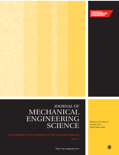
PROCEEDINGS OF THE INSTITUTION OF MECHANICAL ENGINEERS PART C-JOURNAL OF MECHANICAL ENGINEERING SCIENCE
Driving progress in mechanical engineering through shared knowledge.PROCEEDINGS OF THE INSTITUTION OF MECHANICAL ENGINEERS PART C - JOURNAL OF MECHANICAL ENGINEERING SCIENCE, published by SAGE Publications Ltd, stands as a pivotal resource in the field of mechanical engineering, encompassing a wide array of topics from advanced materials to fluid dynamics and system design. With an impact factor reflective of its esteemed reputation, as indicated by its Q2 ranking in the Mechanical Engineering category, this journal serves as a vital forum for researchers, practitioners, and students alike. The journal boasts a rich history, converging research from 1983 to 2024, showcasing innovations and advancements that shape the mechanical engineering landscape. Although it is not an open-access publication, the insights and studies published herein provide invaluable contributions to the engineering community, fostering knowledge exchange and collaborative advancements. Researchers seeking a platform for their pioneering work will find Part C an ideal venue to disseminate their findings and engage with peers in this dynamic field.
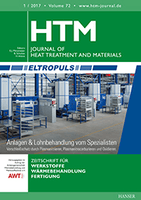
HTM-Journal of Heat Treatment and Materials
Transforming ideas into impactful solutions in metallurgy.HTM-Journal of Heat Treatment and Materials, published by WALTER DE GRUYTER GMBH, serves as a vital platform for the dissemination of research in the fields of Industrial and Manufacturing Engineering, Materials Chemistry, and Metals and Alloys. With an ISSN of 1867-2493 and an E-ISSN of 2194-1831, this peer-reviewed journal focuses on the advancements and methodologies associated with heat treatment processes, materials innovation, and their applications across various industries. Notably recognized in the Q3 category for Industrial and Manufacturing Engineering and Materials Chemistry, as well as Q2 for Metals and Alloys, the journal has garnered significant attention, illustrated by its Scopus rankings, placing it among the scholarly discussions within the field. Although it operates under a closed access model, the journal remains committed to impactful research that influences both academia and industry, ensuring its relevance and importance in shaping future developments in materials science. It is an essential resource for researchers, professionals, and students striving to stay at the forefront of heat treatment and materials research.
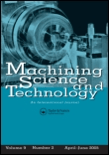
MACHINING SCIENCE AND TECHNOLOGY
Pioneering Developments in Materials and Mechanical EngineeringMACHINING SCIENCE AND TECHNOLOGY, published by Taylor & Francis Inc, is a leading academic journal that focuses on the multifaceted disciplines of machining and manufacturing processes, materials science, and mechanical engineering. With an established presence in the field since 1997 and a projection of continued relevance until 2024, this journal plays a critical role in disseminating cutting-edge research and innovative practices within these sectors. The journal holds a significant standing with a Q2 ranking in Industrial and Manufacturing Engineering, Materials Science, and Mechanical Engineering, reflecting its influential contributions to these fields. According to Scopus rankings, it positions itself in the top percentiles, showcasing its commitment to high-quality peer-reviewed publications. Researchers and professionals will find valuable insights and trends that cater to the ever-evolving landscape of machining technology and materials science, enriching their academic and practical endeavors.

Surface Topography-Metrology and Properties
Exploring the intricate relationship between surfaces and material properties.Surface Topography-Metrology and Properties is an esteemed journal published by IOP Publishing Ltd, dedicated to advancing the field of surface metrology and its interrelation with material properties. With an ISSN of 2051-672X, this journal serves as a pivotal platform for researchers, professionals, and students engaged in the study of surfaces and coatings, particularly in disciplines such as Instrumentation, Materials Chemistry, and Process Chemistry and Technology. The journal maintains a strong academic presence with notable Category Quartile rankings, including Q2 in Materials Chemistry and Surfaces, Coatings and Films, and Q3 in other relevant fields. Although the journal operates under a subscription model, it offers valuable insights and findings that are crucial for advancing technologies reliant on surface characteristics and functionalities. Since its inception in 2013, the journal has continued to publish high-quality research up to the present day, catering to the ongoing needs of the scientific community and contributing significantly to the discourse in surface science.
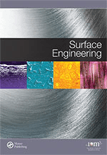
SURFACE ENGINEERING
Catalyzing Discoveries in Surface TechnologySURFACE ENGINEERING, published by SAGE Publications Inc, is a premier international journal dedicated to the advancement of knowledge in the fields of material surface science and engineering. With an ISSN of 0267-0844 and E-ISSN 1743-2944, this esteemed journal has been a critical resource since its inception in 1985, and continues to thrive through 2024. Recognized for its impactful contributions, SURFACE ENGINEERING achieves notable rankings in several categories including Q1 in Conservation and Q2 in key areas such as Condensed Matter Physics and Materials Chemistry. The journal serves a diverse audience of researchers, professionals, and students, providing them with insightful research articles, reviews, and technological developments that drive innovation in surface coatings, materials chemistry, and related disciplines. Although the journal follows a traditional subscription model, it remains an essential platform for disseminating crucial findings and fostering collaborations within the scientific community.
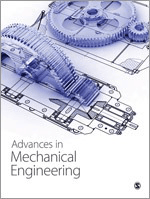
Advances in Mechanical Engineering
Driving Innovation in Mechanical EngineeringAdvances in Mechanical Engineering is a premier open-access journal published by SAGE Publications Ltd, dedicated to the advancement of theoretical and applied research in the field of mechanical engineering. With an ISSN of 1687-8132 and an E-ISSN of 1687-8140, this journal has been a vital resource for scholars and practitioners since its inception in 2009. Housed in the United States, it operates under a commitment to ensure free and immediate access to its high-quality content, enhancing collaboration and innovation across the global engineering community. With a noteworthy Q2 ranking in the mechanical engineering category and a solid Scopus rank placing it in the 59th percentile, the journal serves as an influential platform for cutting-edge research, theoretical advancements, and comprehensive reviews. As the field evolves, Advances in Mechanical Engineering continues to cater to the rigorous needs of researchers, professionals, and students, striving to transform knowledge into tangible engineering solutions. This journal's commitment to excellence makes it a significant contributor to the mechanical engineering field, encouraging dynamic discussions and implications for the future.
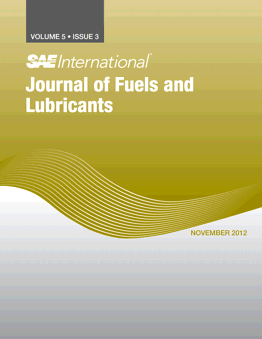
SAE International Journal of Fuels and Lubricants
Unleashing Potential in Energy and EnvironmentWelcome to the SAE International Journal of Fuels and Lubricants, a leading peer-reviewed publication dedicated to advancing knowledge in the crucial fields of fuel technology and lubrication science. Published by SAE International, this journal serves as a vital resource for researchers, industry professionals, and students engaged in the study and application of innovative fuels and lubricants. With an impact factor indicative of its importance, the journal is ranked in the Q3 category for both Fuel Technology and Pollution, highlighting its critical role in addressing global energy and environmental challenges. Covering a range of topics from fundamental research to practical applications, the journal not only contributes to academic discourse but also serves to inform industry practices. Our publication spans the converged years from 2009 to 2024, reflecting a commitment to continuous scholarly contribution. While currently operating under a traditional access model, the journal aims to foster an inclusive environment for discourse in the rapidly evolving fields of energy and environmental science.
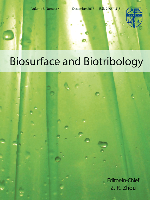
Biosurface and Biotribology
Connecting Engineering and Biophysics for a Sustainable FutureBiosurface and Biotribology, published by WILEY, is an innovative Open Access journal that has been dedicated to advancing the fields of biomaterials, biomedical engineering, and tribology since its inception. With a focus on the surface interactions and tribological behaviors of materials, this journal serves as an essential platform for researchers and professionals eager to explore the intersections of engineering, materials science, and biophysics. While it holds a current categorization in the Q4 quartile for biomaterials and biomedical engineering and a Q3 ranking in mechanical engineering, the journal's commitment to disseminating high-quality, peer-reviewed research contributes to its growing visibility and relevance in the academic landscape. With open access since 2018, it ensures that the latest research is freely available to all, fostering collaboration and innovation. Whether you are a graduate student, a seasoned researcher, or a professional in the field, Biosurface and Biotribology is your gateway to cutting-edge insights and developments that are shaping the future of biomaterials and surface engineering.

Lubricants
Pioneering insights into performance and formulation of lubricants.Lubricants, published by MDPI, is a prestigious, peer-reviewed open-access journal that has been dedicated to advancing the field of lubrication technology since its launch in 2013. With its E-ISSN of 2075-4442, the journal is based in Switzerland and has rapidly established itself as a vital resource in the domains of Mechanical Engineering and Materials Science, achieving Q2 quartile rankings in both fields as of 2023. Lubricants provides a platform for the dissemination of innovative research, offering insights into the performance, formulation, and applications of lubricants across various industries. With a commitment to fostering collaboration and knowledge-sharing, this journal attracts a global audience of researchers, professionals, and students eager to explore the latest developments in lubrication technologies. Open access since its inception, Lubricants ensures that all published works are freely available, promoting greater visibility and accessibility of cutting-edge research in the field.